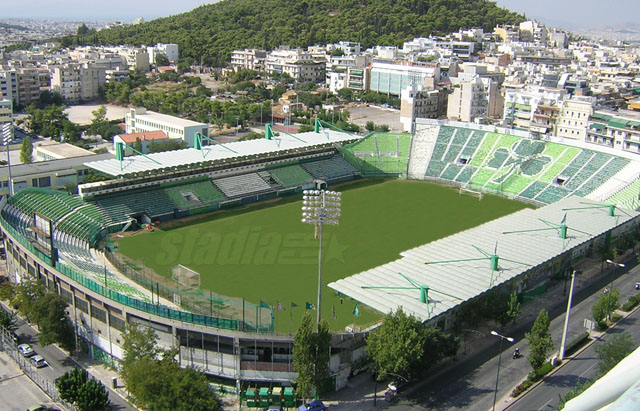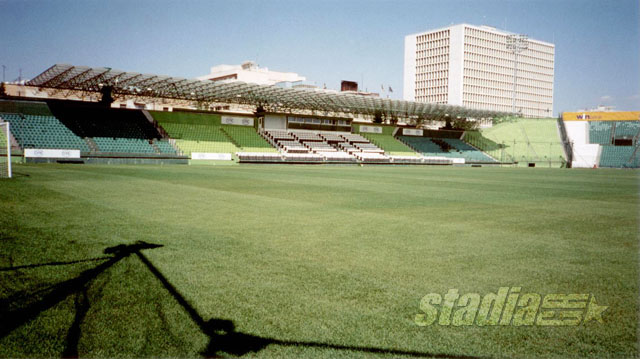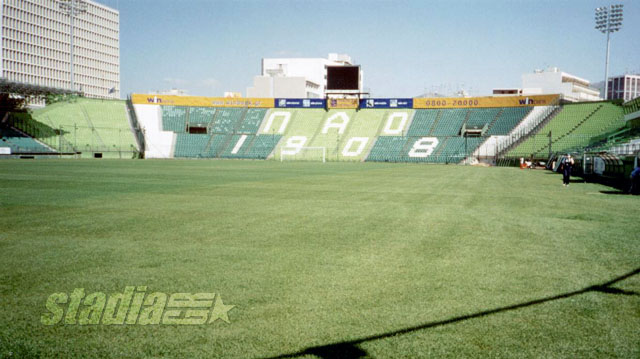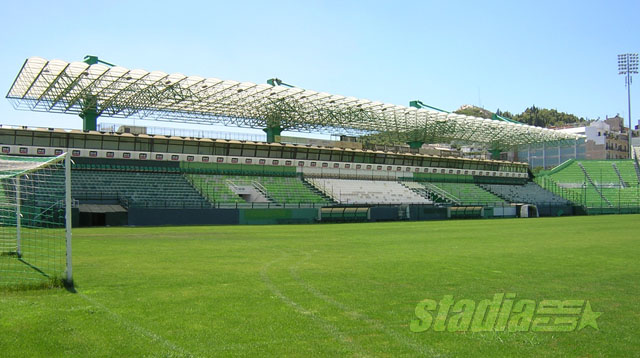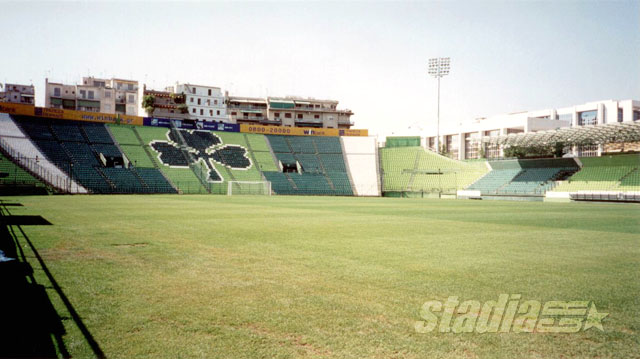| Leoforos
Stadium "Apostolos Nikolaidis" |
|
Almost
all photographs featured on this page (except for the fourth) are
presented in smaller size. You may enlarge any of them by simply clicking
on it.
|
| Capacity: 16,620 (seated) |
| Location: |
|
The stadium is located in central Athens, on Alexandras Avenue. It
is on the north side of Lycabettus Hill that rises over the city centre.
Being so, access to "Apostolos Nikolaidis" Stadium by public transport is very easy and, indeed, highly recommended, instead of using a private car in the sometimes chaotic centre of Athens: |
|
Bus - There is no use listing all the bus lines that
serve "Apostolos Nikolaidis". Just ask for any bus going
to Alexandras (or Kifissias Avenue, which is only 500m away from the
stadium). However, your best chance when in central Athens would be
to use a trolley bus (yellow colour - #7, #8 and #14
stop right outside the stadium).
Metro - It is by far the most convenient way to get to the ground, as "Ambelokipi" station of line 3 is only 200m away. |
| Built in: 1922 (Latest redevelopment in 2001) |
| Record attendance: 29,665 (Panathinaikos FC vs FC Bayern Munich - on 18/10/1968) |
| Home of: Panathinaikos FC (Superleague) |
|
More
data: The stadium's official name is "Apostolos Nikolaidis",
after an old chairman of the club. Most people, however, call it Leoforos
Stadium. This name derives from its location on Alexandras Avenue,
as Leoforos in Greek means Avenue. Some also refer to
it just as Panathinaikos Stadium (careful not to confuse it with the
all-marble Panathenaic
Stadium, where the 1st modern Olympics were held in 1896).
"Apostolos Nikolaidis" Stadium holds a very important place in the history of Greek football. The first stand was built in 1928, and for almost 50 years it hosted the majority of big matches in domestic and international competitions. It was the first to have floodlights installed (1938) and the first with a grass pitch (1958). It was the home of the Greek National Team for many years. |
|
It
is worth noting that the first indoor hall in Greece was constructed
below the stands of the stadium, in 1959. It has a capacity of 1,500
and is located below the east curve of Leoforos. Everyone knows it
by its nickname: the "Indian's tomb". It was called that
by journalists during its inaugural ceremony, as it reminded them
of the namesake film by Fritz Lang that was featured in cinemas at
that time. The two photos below (which you may enlarge by clicking
on them) are quite telling as to the reason why this nickname stayed
with the hall all these years!
|
|
Panathinaikos
left Leoforos in 1984 and moved to the Olympic Stadium. The club returned
to their home ground in 2000, following an upgrading that cost €7
million. They left again in 2005 before temporarily returning in 2007.
However, time is relentless: Panathinaikos finally left their aging
stadium in the summer of 2008. Leoforos Stadium will be demolished
and the area turned into a park. The new stadium of Panathinaikos
will be constructed in Votanikos, in the industrial area of Eleonas.
Check out all the updates on this story in the News
section.
The ownership of "Apostolos Nikolaidis" Stadium is not a straightforward issue. The land belongs to the City of Athens. Panathinaikos AO amateur club (out of which the professional football club was founded in 1979) were given the free "right of use" for 90 years in 1922. |
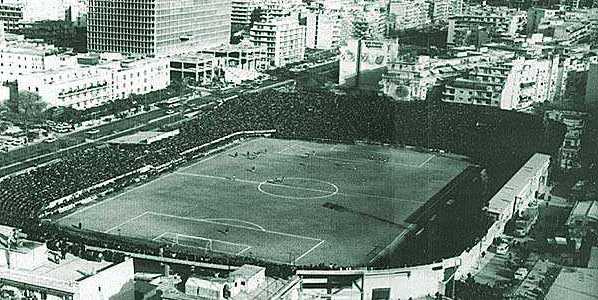 |

